|
|
|
 |

 |
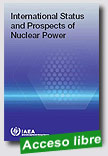 |
International Status and Prospects of Nuclear Power
IAEA, 2008, 54 p.
International Status and Prospects of Nuclear Power describes the growing interest in nuclear power around the world, current projections about its future, new technological developments and the challenges faced in different countries. The report, originally requested by the IAEA’s General Conference in response to the growing number of IAEA Member States interested in nuclear power, has now been published as a separate booklet for a broader audience.
|
Extraído de:
http://www.iaea.org/OurWork/ST/NE/status-and-prospects-of-np.html
Home-page:
http://www.iaea.org/OurWork/ST/NE/status-and-prospects-of-np.html
|
 |
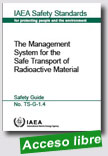 |
The Management System for the Safe Transport of Radioactive MaterialSafety Guide
IAEA Safety Standards Series, 2008, 124 p.
The purpose of this Safety Guide is to provide information to organizations that are developing, implementing or assessing a management system for activities relating to the transport of radioactive material. Such activities include, but are not limited to, design, fabrication, inspection and testing, maintenance, transport and disposal of radioactive material packaging. This publication is intended to assist those establishing or improving
|
a management system to integrate safety, health, environmental, security, quality and economic elements to ensure that safety is properly taken into account in all activities of the organization.
Contents: 1. Introduction; 2. Management system; 3. Management responsibility; 4. Resource management; 5. Process implementation; 6. Measurement, assessment and improvement; Appendix: Graded approach for management systems for the safe transport of radioactive materials; Annex I: Two examples of management systems; Annex II: Examples of management system standards; Annex III: Example of a documented management system (or quality assurance programme) for an infrequent consignor; Annex IV: Example of a documented management system (or quality assurance programme) description for an infrequent carrier; Annex V: Example of a procedure for control of records; Annex VI: Example of a procedure for handling packages containing radioactive materials, including receipt and dispatch; Annex VII: Example of a packaging maintenance procedure in a complex organization; Annex VIII: Example of an internal audit procedure in a small organization; Annex IX: Example of a corrective and preventive action procedure.
Extraído de:
http://www-pub.iaea.org/MTCD/publications/PubDetails.asp?pubId=7958
|
 |
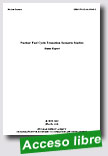 |
Nuclear Fuel Cycle Transition Scenario Studies - Status ReportNuclear Energy Agency (NEA), 03-FEB-09, 124 p.
Future nuclear fuel cycles could effectively address radioactive waste issues with the implementation of partitioning and transmutation (P&T). Previous studies have defined the infrastructure requirements for several key technical approaches. While these studies have proven extremely valuable, several countries have also recognised the complex, dynamic nature of the infrastructure problem: severe new issues arise when attempting to transit from current open or partially closed cycles to a final equilibrium or burn-down mode. While
|
the issues are country-specific when addressed in detail, it is believed that there exists a series of generic issues related only to the current situation and to the desired end point.
These issues are critical to implementing a sustainable nuclear energy infrastructure. The present report focuses on the definition of key issues, the assessment of technologies and national scenario assessments.
Extraído de: http://www.nea.fr/html/pub/ret.cgi?id=new#6194
|
 |
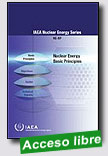 |
This is the leading publication within the Nuclear Energy Series, and manifests and describes the rationale and vision for the peaceful use of nuclear energy. It identifies the basic principles that nuclear energy systems must satisfy to fulfil their promise of meeting growing global energy demands — specifically: efficient operation, a high level of safety, economic competitiveness, proliferation resistance, efficient resource utilization, sustainability and low environmental impact. These principles will form the basis of discussion for all subsequent publications within the series.
|
Extraído de:
http://www-pub.iaea.org/MTCD/publications/PubDetails.asp?pubId=8019
|
 |
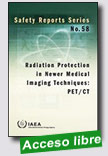 |
Radiation Protection in Newer Medical Imaging Techniques: PET/CT IAEA, Safety Reports Series, 53 p.
This publication, consisting of three volumes, addresses the issue of radiation protection of patients and staff when using the newer medical imaging techniques. It has been developed by the IAEA in collaboration with the World Health Organization, the International Society of Radiology and the International Commission on Radiological Protection. The first volume is devoted to positron emission tomography (PET). The emergence of hybrid systems, such as PET and computed tomography (PET/CT), has stimulated much interest in this area. This volume reviews radiation protection issues arising from PET/CT use and offers guidance on dose management and optimization. The second and third volumes address issues associated with high patient doses received from multi-detector CT (MDCT). Volume 2 focuses on MDCT in cardiac imaging and Volume 3 on its use in colonography. The volumes provide data on patient dose and risk levels, as well as information for practitioners on optimizing techniques. |
Extraído de:
http://www-pub.iaea.org/MTCD/publications/PubDetails.asp?pubId=7955
|
 |
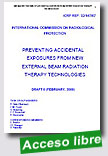 |
New draft report for consultation: Accidental exposures in modern radiotherapy
International Commission on Radiological Protection (ICRP), 23 Feb 2009,
The work of an ICRP Task Group is nearing completion. The report of the Task Group addresses 'Preventing Accidental Exposures from New External Beam Radiation Therapy Technologies'.
This draft has been posted here for public consultation. Because of the nature of the report, the Commission has decided on this occasion to use an accelerated consultation and production process. Therefore, the consultation period will be for 2 months only, instead of the usual 3 months. This means that comments must be entered on our consultation page no later than Friday 24 April in order for us to be able to take them into account. We hope for your understanding in spite of the short consultation time.
|
Extraído de:http://www.icrp.org/draft_accidental.asp
|
 |
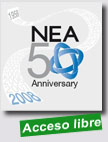 |
NEA 50th Anniversary Historical Review
Nuclear Energy Agency (NEA) - OCDE, 10-OCT-08, 48 p.
Although these objectives still represent a large part of its “raison d’être”, the Agency has evolved in many ways over the years. Its current membership of 28 OECD countries across the world demonstrates the present value they each draw from sharing confidently the experience collected among them, and benefiting, for example, from international joint projects and cooperative validations through “peer reviews”.
|
Thanks to the high competence of its standing technical committees, and their methods to arrive at consensus, the NEA has regularly produced and published “collective opinions” pointing in a large range of areas, the results achieved, the knowledge acquired, deficiencies to remedy and desirable follow ups. From the beginning of the 1970s, the Steering Committee for Nuclear Energy resolved to give the Agency’s work a more determined policy orientation. This orientation was reiterated at the end of the 1990s by the High Level Advisory Group of the OECD on the Future Role of the NEA. This invitation to involve itself in broader debates by means of its policy statements allowed the Agency to enter the wider policy discussions at OECD level encompassing sustainable development, global warming, and the evaluation of the nuclear energy option in a socio-economic context. Interest worldwide in nuclear energy is growing and there is a clear commitment to increase generating capacity in many countries in the years to come in order to achieve security of energy supplies, taking into account global warming and ever rising fossil fuel prices. The will and the tools are available to ensure that the next generation of nuclear power plants will be even safer, more cost effective and even more environmentally friendly. The NEA has demonstrated throughout its history, and particularly in recent years as Technical Secretariat to the Generation IV International Forum (GIF) and the Multinational Design Evaluation Programme (MDEP), that it possesses the competence and the managerial skills needed to pool and maintain expertise and co-ordinate multinational nuclear projects.
At the dawn of this new century the Agency appears well prepared to continue its role in sustaining international cooperation in the use of nuclear energy for peaceful purposes for the benefit of its member countries. These co-operative efforts will continue to include other countries with a view to possible membership or other modes of partnership.
I hope that the following succinct overview, for which we have to thank Jacques de la Ferté who was the Secretary of the Steering Committee for Nuclear Energy over a large part of the Agency’s history, will provide a faithful illustration of the value of the tasks accomplished, their relevance to the needs of our member countries, and the competence and dedication of the Secretariat throughout these fifty years. Luis Echávarri Director-General
This publication is also available in French as: 50ème anniversaire de l'Agence -
http://www.nea.fr/html/pub/ret.cgi?id=6366
Extraído de:
http://www.oecdnea.org/html/general/reports/nea6365-50th-historical.pdf
|
 |
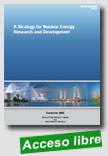 |
A Strategy for Nuclear Energy Research and Development
Electric Power Research Institute and the Idaho National Laboratory, December 2008, 16 p.
A new report co-authored by the Electric Power Research Institute and the Idaho National Laboratory details how nuclear energy research, development, demonstration and deployment can help reduce U.S. carbon emissions and bolster energy security.
The report outlines the research necessary to create options for the deployment of nuclear energy in the decades ahead. The
|
report also examines nuclear energy’s relevance to nonproliferation and the need for the United States to maintain international leadership in developing nuclear energy—issues that must be addressed for nuclear energy to have a prominent role in meeting the nation’s future energy needs. Because of the scale, cost, and time horizons involved, sustaining and increasing nuclear energy’s share will require a coordinated research effort—combining the efforts of industry and government, supported by innovation from the research community.
The study was issued as the United States faces unprecedented challenges in climate change and energy security. President Obama has called for a reduction of CO2 emissions to 1990 levels by 2020, with a further 80 percent reduction by 2050. Meeting those aggressive goals while increasing overall energy supply will require contributions from all non- and low- emitting generating technologies.
The strategic plan defines six goals to expand the safe and economical use of nuclear energy: Maintain today’s nuclear fleet of light water reactors; Significantly expand the fleet with advanced light water reactors; Develop non-electric applications for high-temperature reactors; Assure safe, long-term used fuel management; Assure long-term nuclear sustainability; Strengthen United States leadership internationally.
“The report recommends that R&D to support these goals be focused in three technical areas: light water reactors and advanced light water reactors, high-temperature reactors, and fast reactors and advanced fuel cycles,” said EPRI’s Chris Larsen, vice president of the nuclear sector. “This research blend will enable the country to capitalize on numerous safety and technology advances for existing light water reactors, while developing the next generation of reactors so nuclear can service a variety of process heat applications and support nuclear fuel recycling. In essence, it establishes a set of options for deployment of non-emitting nuclear energy through this century.”
Total funding needs from government and industry for the proposed research agenda covering the initial 2010-2015 period are estimated at $3.5 billion.
Extraído de:
http://my.epri.com/portal/server.pt/gateway/
PTARGS_0_237_317_205_776_43/http%3B/uspalecp604%
3B7087/publishedcontent/publish/epri_inl_
report_outlines_nuclear_energy_strategy_da_628030.html
|
 |
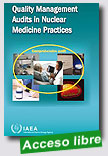 |
Quality Management Audits in Nuclear Medicine Practices
IAEA, 2008, 57 p.
Quality management (QM) is essential for modern nuclear medicine departments. This publication presents a method of conducting a systematic annual audit process. A key outcome of the QM methodology should be a culture of reviewing essential elements of the clinical service. Each chapter of this publication is set out as a series of questions related to specific components of the nuclear medicine service. The diversity of the nuclear medicine service and the multidisciplinary nature of the contributions (including clinical, technical, radiopharmaceutical |
|
|
|
|
|
